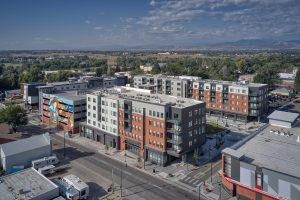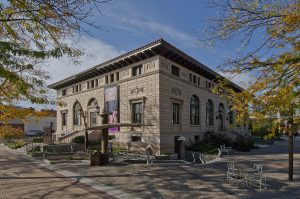Bridging the Economic Gap with Municipal Partnerships
By: Kevin Brinkman, Co-Founder & CEO, Brinkman
Adapt or die. It’s as true of real estate development as it is in nature. That phrase has been repeated in various forms by authors, researchers, business coaches, and let’s not forget Brad Pitt, over the past century. It seems to apply no matter what the context.
In today’s multi-family real estate market, it’s officially time to adapt, pivot and find a new way of making deals happen. With construction prices continuing to vastly outpace rent increases, multi-family developers are starting to be priced out of projects and there’s no end in sight.
It’s not all bad news, though. The good news is that these rising costs have constrained the market. It isn’t becoming overbuilt and leasing remains strong. If developers can find new ways of structuring deals, there’s still plenty of success to be had.
One of the ways Brinkman is facing these challenges is through strategic public/private partnerships. Although this approach has always been a strong part of our mission and vision, it’s become even more important in the context of today’s real estate landscape. We’ve completed more than 10 projects with a public/private component, many of which have included multi-family product. There have been many lessons learned through each unique project, but two main takeaways rise to the top.
Lesson #1: Build where there’s political will
As we explore new development opportunities, we’re always seeking out like-minded municipal partners with a triple bottom line focus that are looking for the shared outcome of creating meaningful places that enhance communities.
 One of our earliest public/private partnerships was the Flats at the Oval student housing project in Fort Collins. Brinkman led nearly two years of collaboration with the City of Fort Collins, Colorado State University, Downtown Development Authority, project investors, Sigma Alpha Epsilon fraternity officials and neighboring residents to ensure the project collectively benefited all involved. The result was the first Green Globes certified project in Fort Collins that met a growing need for the campus and broader community at large.
One of our earliest public/private partnerships was the Flats at the Oval student housing project in Fort Collins. Brinkman led nearly two years of collaboration with the City of Fort Collins, Colorado State University, Downtown Development Authority, project investors, Sigma Alpha Epsilon fraternity officials and neighboring residents to ensure the project collectively benefited all involved. The result was the first Green Globes certified project in Fort Collins that met a growing need for the campus and broader community at large.
Most recently, we completed The Foundry in downtown Loveland which met the shared goal of revitalizing the historic downtown region. With the support of public representatives, we built an urban living option that increased density and helped propel economic and social vitality in the area.
 Lesson #2: Find the right tools
Lesson #2: Find the right tools
Municipal partners have many different financing mechanisms in their toolbox and it’s our job as their development partner to understand their vision and provide guidance on the best way to bring it to fruition. We go into every project asking the same questions that provoke new and creative ideas for our municipal partners. Our public/private partnerships have provided a wide range of creative financing options over the years to help us create thriving community spaces.
Tax increment financing (TIF) is a common instrument that’s been used widely in real estate development since the 70s. Each state government determines the criteria for using this tool and the local government administers it. This was a component of several of our urban mixed-use developments in partnership with Downtown Development and Urban Renewal Authorities because they were helping to fill a growing housing gap.
Metropolitan districts can also be established to finance public infrastructure that delivers on City objectives and benefits the public such as environmental upgrades, public infrastructure and public spaces. These taxing districts are especially fitting for the types of community-driven projects Brinkman seeks out that are changing the downtown landscape.
In addition to taxing instruments, post-construction fees can be applied to assist with financing a project. We’ve seen success in utilizing both public improvement fees (PIFs) and retail sales fees (RSFs) to finance the construction of mixed-use projects. These fees are generated by the economic success of the project and help developers overcome one of the biggest barriers to entry.
A unique and lesser-used financing instrument is a certificate of participation (COP). A COP is a public debt instrument secured by public collateral. This tax-exempt financing agreement does not require voter approval and therefore can often be issued quicker than other bond options.
 With redevelopment and renovation projects, façade easements provide options for developers. These agreements typically consist of utilizing public money to improve the façade and hold the property owner accountable for upkeep. Our portfolio of redevelopment projects includes many instances of utilizing this tool.
With redevelopment and renovation projects, façade easements provide options for developers. These agreements typically consist of utilizing public money to improve the façade and hold the property owner accountable for upkeep. Our portfolio of redevelopment projects includes many instances of utilizing this tool.
Lastly, municipal fee waivers are a crucial deal point for most development projects. The accrued fees can be immense depending on the project so our partners’ willingness and ability to waive fees could be the difference between making a project a reality and it being dead in the water.
While public/private partnerships certainly aren’t the only way of overcoming the challenge of rising construction costs, we’ve found them to be one of the best ways to ensure we’re continuing to create meaningful places that positively impact the communities in which we work.
Back to News
